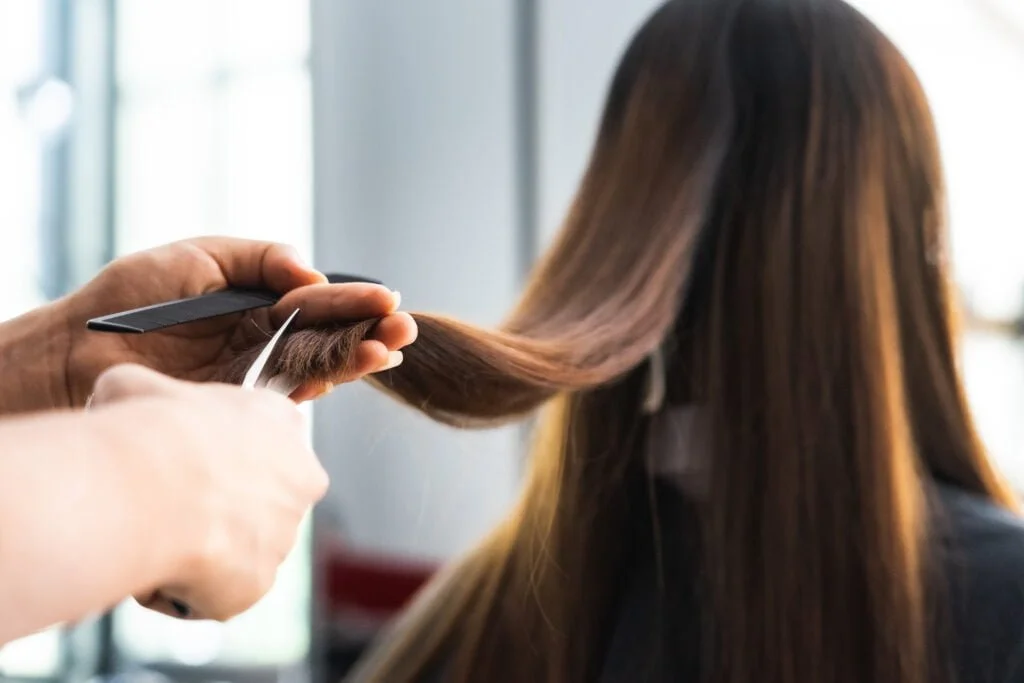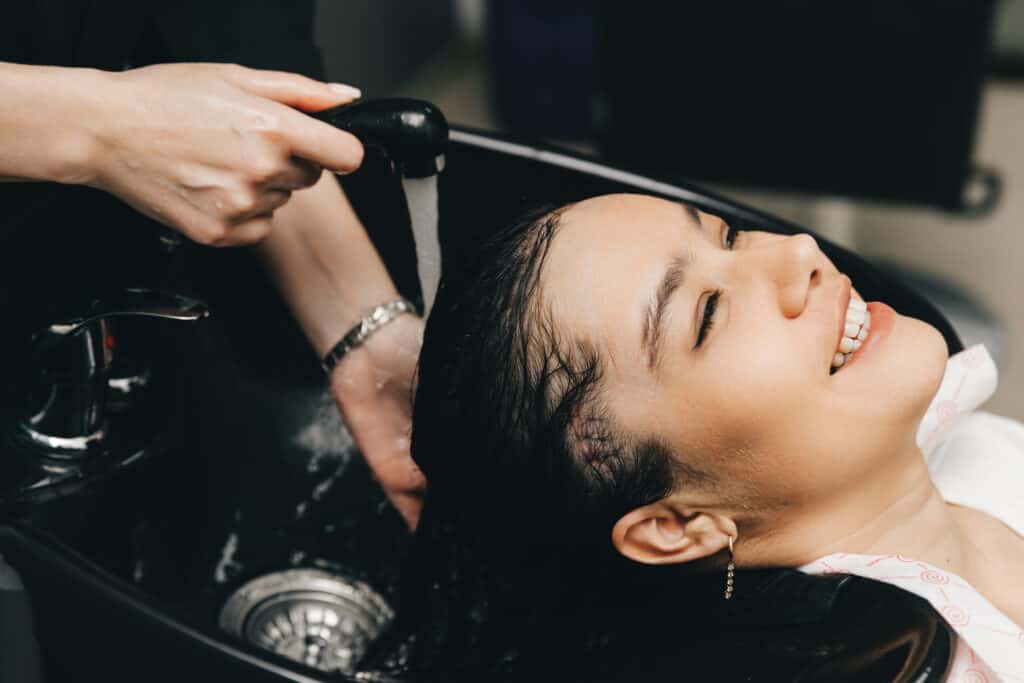
Catherine Mitchell
accomplished freelance writer hailing from the vibrant city of Boston. With a profound passion for promoting healthy living, Catherine utilizes her expertise to inspire readers to embrace a nourishing lifestyle. Holding a degree in Nutrition Science, she has a solid foundation of knowledge in the field.
Understanding Haircut Prices
Breaking Down the Average Cost of a Haircut

Being a woman, I have often wondered about the average costs of women’s haircuts and how they compare to men’s haircuts. It’s no secret that there can be a significant disparity between what women and men pay for a haircut. I used to think that the difference was purely based on hair length, but then I learned it’s not just about the length of your hair. The average haircut prices also include the stylist’s time, skill, and the range of services provided during the appointment, such as a wash, haircut, and blow dry.
One day, I asked my local salon owner about the difference in prices. I was informed that haircut costs generally involve the intricacy of the style desired, the hair length, and the stylist’s experience. An intricate style or long hair typically requires more time and skill, which factors into the cost. Understanding these factors made me realize why women’s haircuts typically cost more than men’s.
Factors that Influence the Cost of a Haircut
Other factors can impact haircut prices, too. For instance, the location of the salon, whether it’s an independent salon or part of a salon chain, like Great Clips, plays a role. Prices in salons located in high-end areas, like New York City, are typically higher than those in small towns, such as West Virginia. Another crucial element is the salon owner’s business overhead costs, including rent and utilities, which they must cover to stay in operation. This can significantly influence how much haircuts cost.
Additional services, like hair color or hair styling, can also add to the final cost. Often, women who have their hair colored or styled professionally may find themselves paying more at the hair salon. To manage these costs, many salons offer special discounts or bundled services that include a haircut, color, and styling at a reasonable price. So, the cost of a women’s haircut can vary based on several factors, not just the haircut itself.
Why Regular Haircuts are Important
The Role of Haircuts in Personal Care and Self-Expression
As a woman, I believe in the importance of regular haircuts. They are not just about maintaining hair length or style; they are about self-expression and personal care. Each haircut can significantly change how I look and feel. A fresh haircut, whether it’s trimming my bangs or going for a completely new style, can give me a boost of confidence and a sense of self-renewal. It’s like putting on a new dress that perfectly fits and compliments your body shape. This feeling is priceless, and yet the price of a haircut often holds women back from experiencing it regularly.
When you pay for a haircut, you’re not just paying for the stylist to cut your hair. You’re also paying for their expertise in shaping your hair to suit your face shape, lifestyle, and personal style. A skilled stylist at your local salon knows how to create a style that will enhance your natural features, and make you feel like the best version of yourself. Haircuts are a form of self-care, a way of taking care of your physical appearance and, by extension, your mental and emotional well-being.
Impacts of Neglecting Regular Haircuts

I’ve noticed that when I neglect regular haircuts, it doesn’t just affect my hair’s health—it impacts my overall demeanor. Seeing split ends or outgrown layers can make me feel less put-together and can even affect my confidence. There’s a marked difference in how I carry myself when I’m satisfied with my hair versus when I’ve let my haircut go for too long. As a woman, the significance of our haircuts goes beyond aesthetics—it’s tied to our identity and how we present ourselves to the world.
By skipping regular haircuts, I’ve also realized that I end up spending more time and money in the long run. I find myself investing in expensive hair products to manage my unruly hair or trying to mask my dissatisfaction with different styling methods. These are just temporary fixes. Nothing compares to the feeling of fresh, professionally cut hair, and the boost of confidence that comes with it.
Assessing Your Personal Budget
Identifying Your Personal Financial Constraints
I always aim to be wise about my spending, which means I have to assess my personal budget frequently. This assessment includes determining the costs of necessities, setting aside savings, and allotting a portion of my money for personal needs and wants, such as haircuts. While I value the benefits of professional haircuts, I have to consider other financial responsibilities, such as housing, food, childcare, and transportation. So, while I want to maintain regular haircuts, I have to balance these costs with other expenses in my life.
After careful evaluation, I’ve concluded that I can’t spend as much as I’d like on haircuts. The average cost of a women’s haircut is more than what I can comfortably allocate from my budget without impacting my ability to meet my other financial obligations. This realization was disappointing initially. Still, it has pushed me to explore different strategies to ensure I can afford regular haircuts without compromising my financial stability.
Importance of Prioritizing Spending
By recognizing the limitations of my budget, I’ve learned the importance of prioritizing spending. Haircuts are important to me—they are part of my self-care routine and help me express my personal style. But the prices of haircuts at high-end salons can be daunting. Understanding that I can’t always afford expensive haircuts, but still valuing their importance, has led me to seek alternatives and carefully consider where I allocate my funds.
One strategy that I’ve found helpful is to separate my needs from my wants. I need a haircut to maintain my hair’s health and my personal grooming. However, do I always need a high-end salon experience? Probably not. By distinguishing my needs from my wants, I’ve been able to reassess and reallocate my spending in a way that allows me to meet my financial obligations and my personal needs more effectively.
Strategies for Incorporating Haircuts into Your Budget
Cost-effective Salon Options

When considering haircuts and budget, I started researching cost-effective salon options. I found that many salons offer a range of prices for their services based on the experience level of their stylists. A haircut from a junior stylist typically costs less than one from a senior stylist, allowing customers to choose a service that fits within their budget. Additionally, some salon chains offer competitive prices for their services, making them an appealing option for individuals like me who are seeking professional haircuts at a more affordable price.
Another option I’ve explored is attending a hairdressing school salon. These establishments offer discounted services performed by students under the supervision of a licensed instructor. It’s a win-win situation—the students get practical experience, and I get a haircut at a significantly reduced price. While it might take a bit longer than a regular salon visit, the cost savings are worth the extra time.
Timing Your Haircuts to Maximize Value
I’ve found that timing my haircuts can help extend the lifespan of each cut and maximize value for money. I’ve started to go for styles that grow out well and require less maintenance, allowing me to extend the time between haircuts. For instance, instead of a short, structured cut that requires frequent trims to maintain its shape, I opt for a longer, layered style that looks good even as it grows out.
Also, I schedule my haircuts strategically. Instead of adhering to the typical six to eight-week recommendation, I assess the condition of my hair and stretch out my appointments as much as I can without compromising my hair’s health. This approach has allowed me to reduce the frequency of my salon visits, resulting in significant savings over time.
Exploring Alternative Solutions
The Potential of At-Home Haircuts
In my quest for budget-friendly haircuts, I’ve also considered at-home haircuts. While this option might seem intimidating initially, I’ve found that with some patience and practice, I can handle simple trims myself, particularly for maintaining bangs or tidying up split ends. This has proven to be an effective way to reduce the frequency of my professional haircut appointments without neglecting my hair’s health and appearance.
There’s a wealth of tutorials and guides available online that can help even the most novice of hair cutters. That being said, I’m careful to avoid attempting complex styles or drastic changes—those I leave to the professionals. At-home haircuts serve as a stopgap measure to help maintain my hair between professional cuts, not as a replacement for a stylist’s skill and expertise.
Opportunities for Salon Discounts and Deals
While looking for ways to fit haircuts into my budget, I discovered that many salons offer discounts and deals. Some offer discounted prices for new clients, while others provide loyalty programs where you can earn points for each service you get, which can be redeemed for discounts on future services. Some salons even offer a referral program where you and a friend can get a discount if you refer them as a new client. These offers can be a great way to get professional haircuts at a reduced price.
I also keep an eye out for special promotions during holidays or off-peak hours. Many salons offer discounts during these times to attract clients. By being flexible with my schedule and planning ahead, I can take advantage of these deals and fit professional haircuts into my budget.
Maintaining a Balance
Preventing Financial Guilt in Personal Care Spending
One of the challenges I’ve faced in budgeting for haircuts is dealing with the guilt that sometimes comes with spending money on myself. As much as I value self-care and personal grooming, parting with my hard-earned money for a haircut can sometimes feel indulgent, especially when I’m juggling other financial obligations. However, I’ve learned that it’s crucial to maintain a balance. Haircuts are not a frivolous expense—they’re an investment in my self-esteem and personal image.
Instead of feeling guilty, I remind myself that taking care of my appearance and well-being is just as important as paying my bills. I shouldn’t feel guilty for allocating a portion of my budget towards personal care. Instead, I focus on being resourceful and finding ways to make my money stretch further—like maximizing the lifespan of my haircuts, choosing cost-effective salons, and taking advantage of discounts and deals.
Finding Satisfaction in a Balanced Budget
Through this journey of navigating haircuts and budgeting, I’ve found satisfaction in knowing I’m taking care of both my financial health and personal well-being. By being mindful of my spending, I’ve managed to incorporate regular haircuts into my budget without overextending myself. This balanced approach has allowed me to enjoy the benefits of professional haircuts without any financial stress.
It’s also given me a sense of control and empowerment. I’m no longer at the mercy of salon prices—I have strategies and options that allow me to maintain my hair and my financial health. This balance doesn’t just make my hair look good—it makes me feel good, too. And that’s a feeling that’s worth every penny.
Embracing a Balanced Approach to Haircut Budgeting
When it comes to budgeting for haircuts, it’s essential to find a balance between your personal needs, financial constraints, and self-care. Understanding the average cost of a haircut, factors that influence prices, and the importance of regular haircuts can help you make informed decisions about how to allocate your resources.
By assessing your personal budget, prioritizing your spending, and exploring cost-effective salon options, you can ensure that regular haircuts fit within your financial means. Timing your haircuts strategically, considering alternative solutions like at-home trims, and taking advantage of salon discounts and deals are additional strategies to maximize the value of your haircuts.
Maintaining a balance between your financial responsibilities and personal well-being is crucial. By preventing financial guilt and finding satisfaction in a balanced budget, you can enjoy the confidence and self-expression that come with well-maintained hair, without compromising your financial stability.
Remember, haircuts are an investment in yourself. By approaching haircut budgeting with mindfulness and resourcefulness, you can achieve a sense of control and empowerment over your personal care routine. Embrace a balanced approach to haircut budgeting, and discover the transformative impact it can have on both your hair and your overall well-being.

